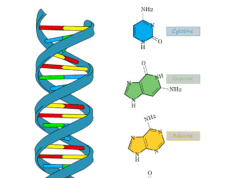Penicillin Antibiotics
Penicillin is a generic term that refers to an antibiotic or group of antibiotics produced from various types of muds such as Penicillium notatum or Penicillium chrysogenum. Penicillins are a mixture of several types of closely related molecules with the molecular formula C9H11N2O4SR. It is the first antibiotic that was discovered in 1929 by Scottish scientist Alexander Fleming. It is the least toxic among all the antibacterial drugs. Nearly five percent of patients receiving penicillin may suffer some side effects or allergic response. A common list of six natural types of penicillins is given below

Types of Penicillins
Different types of penicillin obtained from mold penicillium are classified into two classes such as natural and semisynthetic penicillins.
- The naturally occurring penicillins are formed during the fermentation of mold penicillium. Benzylpenicillin or penicillin G or II are the most important naturally occurring penicillins which has been used in medicine. The other naturally occurring penicillins such as penicillin-F, X, K, or V are not used in medicine.
- There are major types of semisynthetic antibiotics related to penicillins which are isolated from penicillin G. Many new semisynthetic types of penicillin can be obtained from 6-aminopenicillanic acid (6-APA) by the acylation with acid.
- Ampicillin and Amoxycillin are the two broad-spectrum antibiotics of the penicillin group that may be effective against several types of diseases.
How to Make Penicillin?
Various methods have been developed to make penicillin on a commercial scale. Commercially it may be made by three methods such as surface culture, Bran method, and submerged culture method.
Surface Culture Method
It is the first method used to make penicillins on a commercial scale. Presently, the surface culture method is applied only for laboratory studies.
- An aqueous solution of molasses with a pH scale of 7 to 8 is used for the growth of microorganisms.
- Under such conditions, sucrose, mineral salts, and nitrogenous materials are used for the ideal growth of molds.
- After six to seven days, the concentration of penicillins reaches up to 0.3 to 0.4 mg per cc.
High labor costs restricted the commercial production of penicillin by the surface culture method.
Bran Method
The moist brain is a good substance for the growth of molds. The resultant penicillin obtained by this method is extracted as a liquid.
Bran is a bad conductor of heat. Therefore, it is difficult to sterilize. Moreover, the developing molds made by the bran method produced heat which is partly destroyed penicillin.
Submerged Culture Method
The submerged culture method is the most important method for the production of penicillin.
- In the Submerged culture method, the inoculum is made into large tanks and the medium usually contains lactose and corn-steep liquor.
- The medium is agitated by a stream to maintain a temperature of about 24 °C.
- Under such conditions, the molds are growing on the tanks.
Uses of Penicillin
In 1929, Fleming discovered a mold of Penicillium species that inhibits the growth of certain bacteria. Penicillins are used for treating bacterial infections but they do not respond to the virus and fungal infections.
One-time penicillins are considered the queen of drugs. Semisynthetic antibiotics such as amoxicillin and ampicillin are the most commonly prescribed drugs today. These are used widely by doctors to treat a broad spectrum of respiratory infections, skin, and bacterial infections.
In general, the drugs are active against gram-positive microorganisms or bacteria. Gram-positive bacteria such as Clostridium, Listeria, Neisseria, Staphylococcal, and Streptococcal genus are treated by antibiotics penicillin.
A list of conditions and diseases that respond to penicillin therapy include,
- Anthrax
- Tetanus
- Diphtheria
- Pneumonia
- Scarlet fever
- Childbirth fever
- Meningitis
- Gonorrhea
- Syphilis
- Septicemia
- Actinomycosis.
The antibiotic may be used topically, orally, or parenterally. In oral therapy, the dose must be much larger due to destruction in the digestive treat. The dry sodium or potassium salts of penicillins are available for sterile injections or inhalations. The dry calcium salts of penicillins are used topically as a powder, tablet, or ointment.
Other dosages of penicillin are formed by suspension of salts in oil or wax for intramuscular injection and buffered oral tablets. The dosage accompanied by the use of very insoluble salts of penicillin has permitted the attainment of high blood levels over a long period of time.
Penicillin Side Effects
It is the least toxic of all antibacterial drugs. Nearly five percent of patients receiving the drug penicillin suffer from some side effect or allergic response.
Difficulty breathing, and swelling of your face, lips, tongue, or throat are the most common allergic signs of penicillin. Therefore, call the doctor if you feel any side effects caused by the reaction of penicillin.
- The serious side effects of penicillin are diarrhea, fever, chills, body aches, flu symptoms, bleeding, unusual weakness, urine problems, skin rash, itching, agitation, confusion, unusual behavior, etc.
- Nausea, vomiting, stomach pain, vaginal itching or discharge, and headache are the less serious side effect of penicillin.
Another problem commonly faced in its use is due to the presence of a large number of penicillin-resistant organisms in our bodies. This drawback can be overcome by the new discovery of broad-spectrum penicillin antibiotics.








